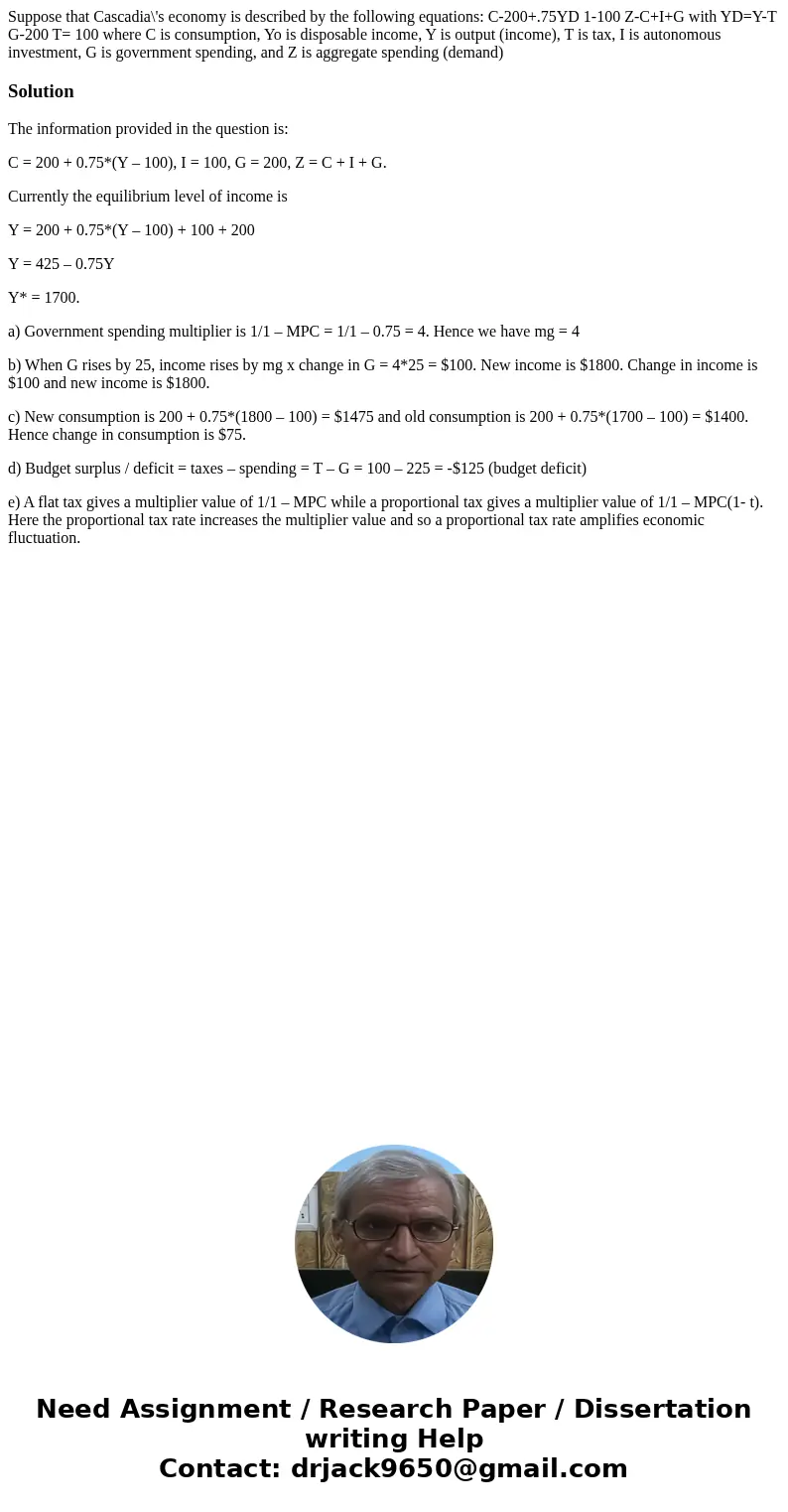Suppose that Cascadias economy is described by the following
Solution
The information provided in the question is:
C = 200 + 0.75*(Y – 100), I = 100, G = 200, Z = C + I + G.
Currently the equilibrium level of income is
Y = 200 + 0.75*(Y – 100) + 100 + 200
Y = 425 – 0.75Y
Y* = 1700.
a) Government spending multiplier is 1/1 – MPC = 1/1 – 0.75 = 4. Hence we have mg = 4
b) When G rises by 25, income rises by mg x change in G = 4*25 = $100. New income is $1800. Change in income is $100 and new income is $1800.
c) New consumption is 200 + 0.75*(1800 – 100) = $1475 and old consumption is 200 + 0.75*(1700 – 100) = $1400. Hence change in consumption is $75.
d) Budget surplus / deficit = taxes – spending = T – G = 100 – 225 = -$125 (budget deficit)
e) A flat tax gives a multiplier value of 1/1 – MPC while a proportional tax gives a multiplier value of 1/1 – MPC(1- t). Here the proportional tax rate increases the multiplier value and so a proportional tax rate amplifies economic fluctuation.

 Homework Sourse
Homework Sourse